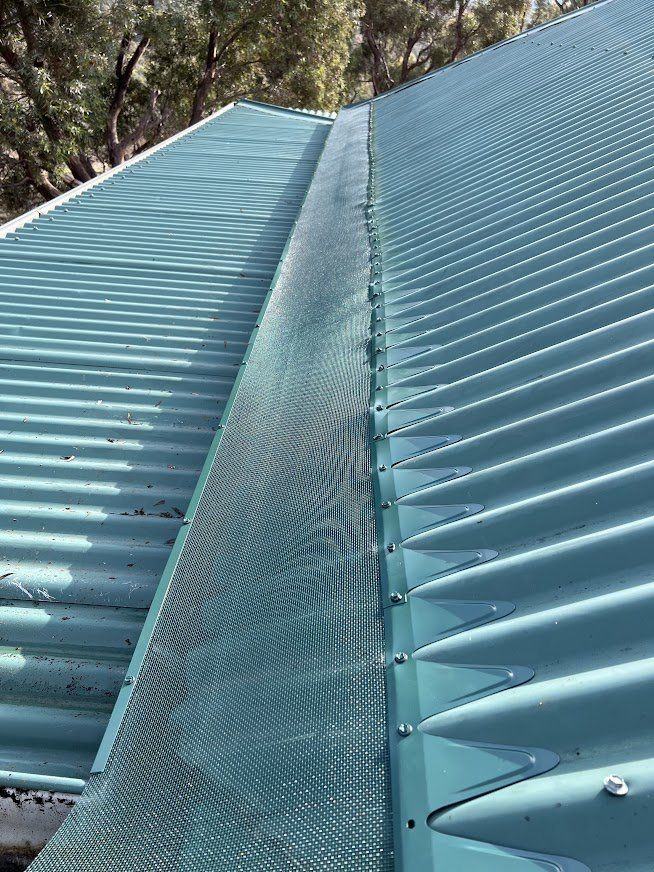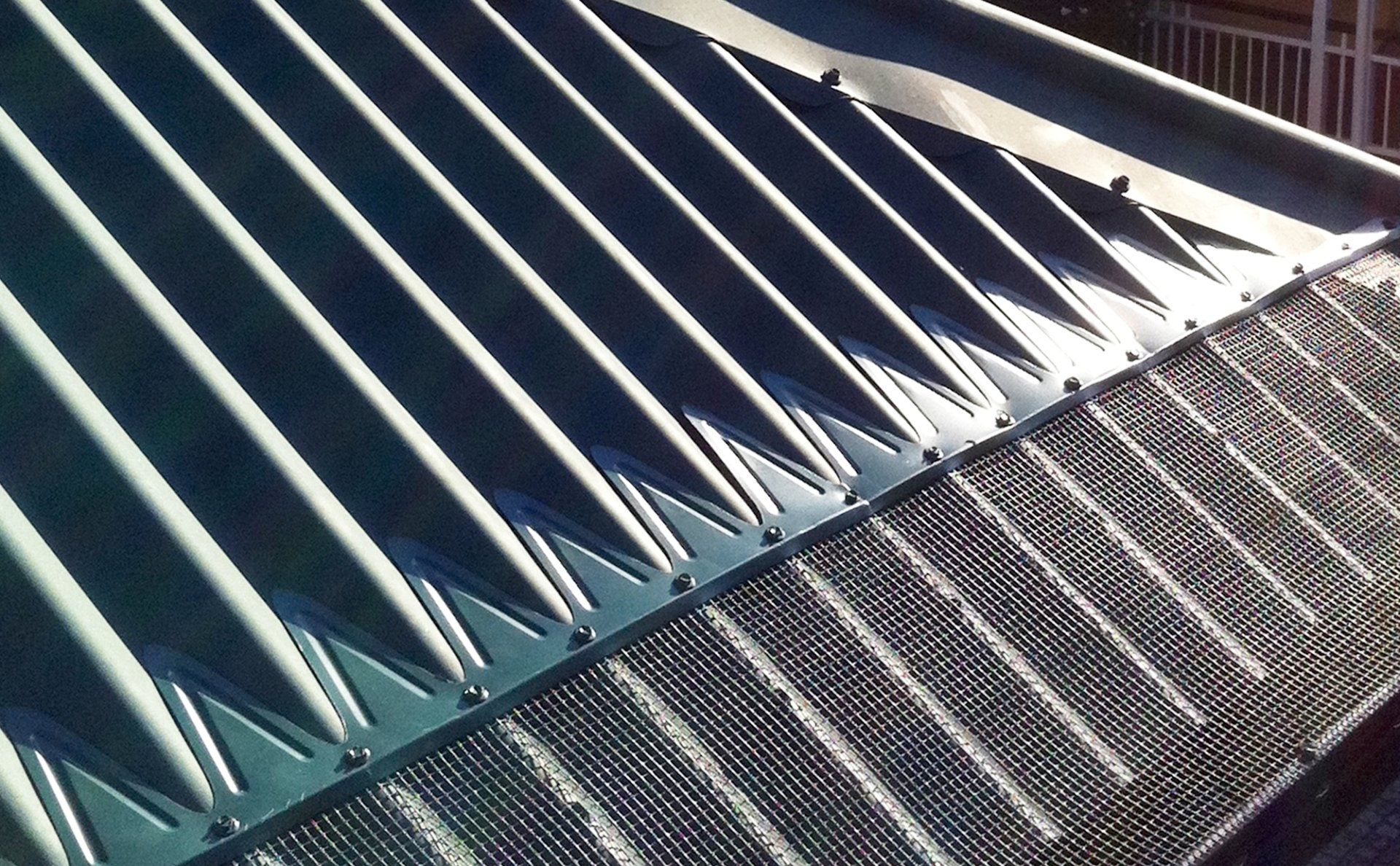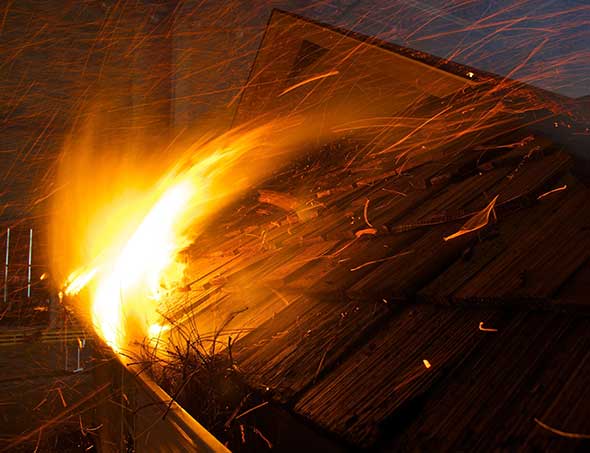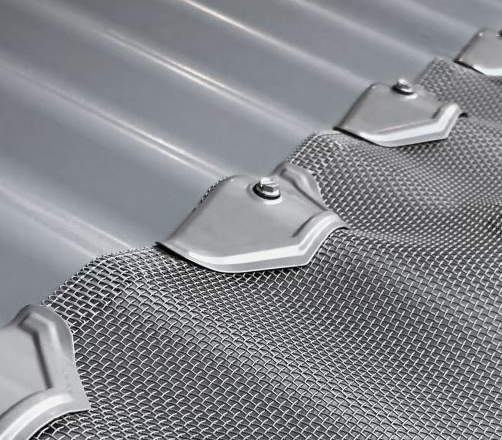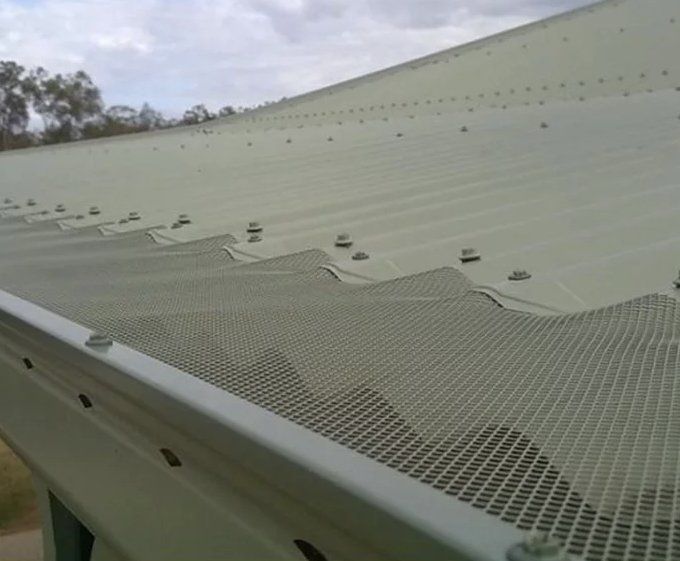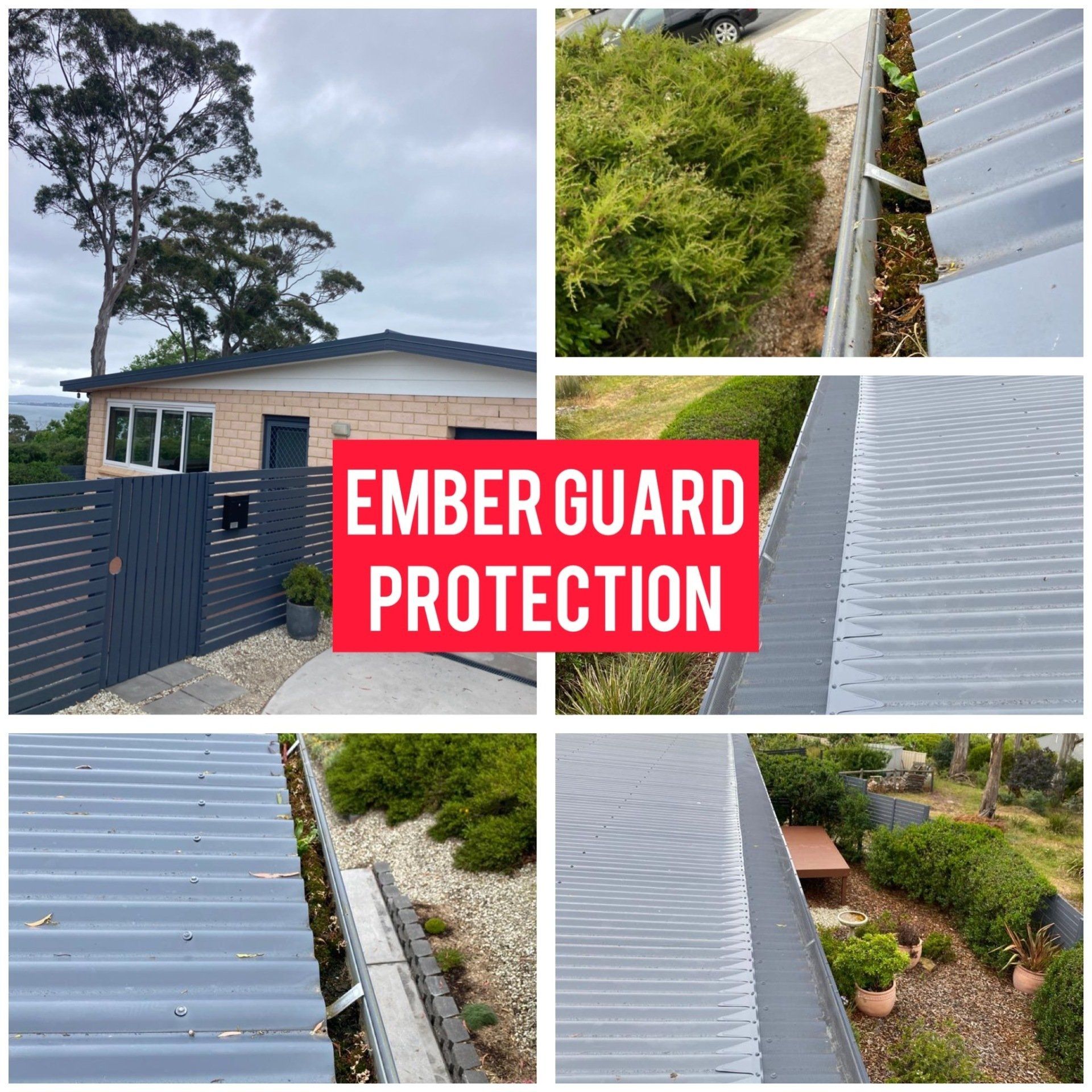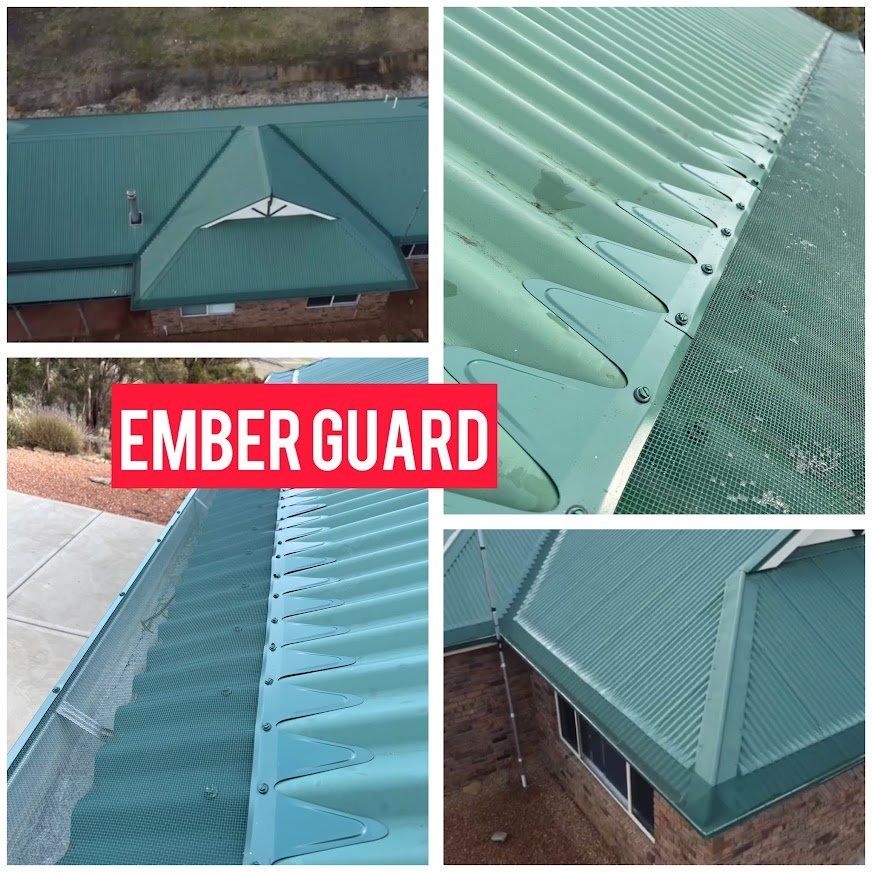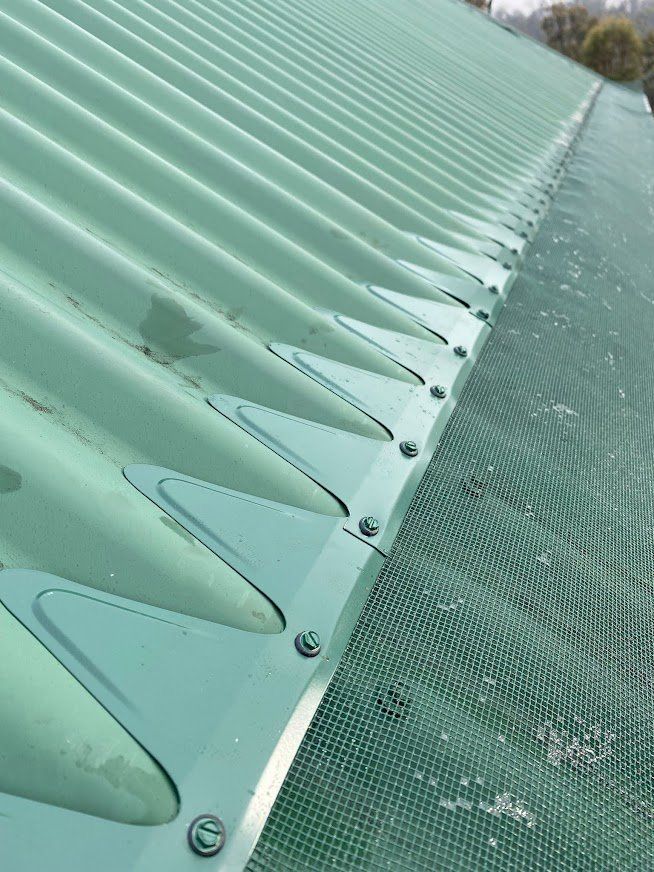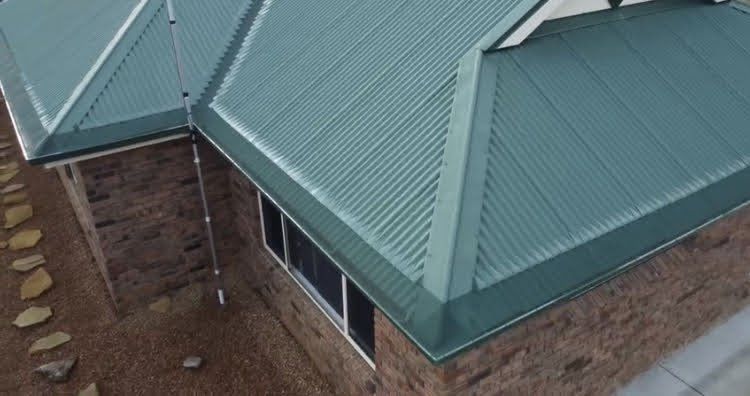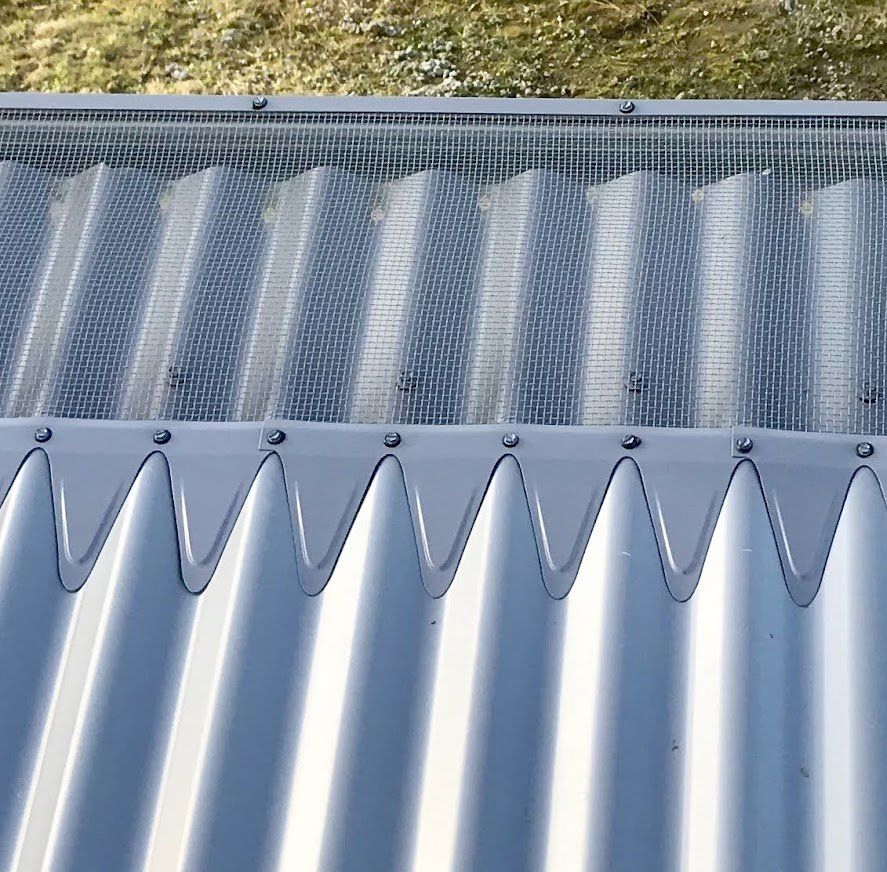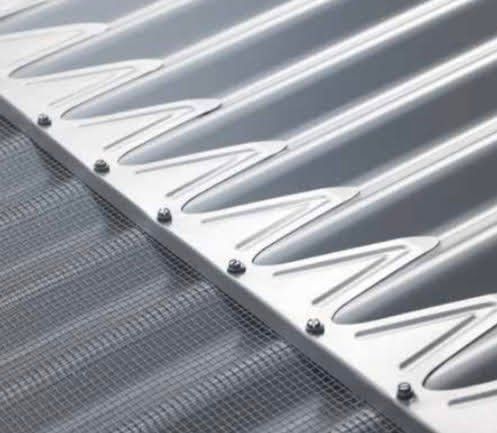Tassie Ember Guard
Tasmania's #1 Ember Guard Solution
You can help protect your home with our Quality Ember Guard System today! If you live in a bushfire zone and are concerned about fire embers landing in your gutters then a quality ember guard system may be the solution you're after.
Across Australia, bushfires have become a grave threat. However, the surprising fact is that the bushfire is not a direct threat to your house. More than 85% of houses that become victims of bushfire attacks, do not directly come in contact with the fire but the windborne embers. This ember attack can burn your house down to debris, as it can not only set fire to other fuel sources near you but also cause an internal house fire due to the infiltration of embers through gaps that are as small as 3mm. To prevent this, you need to be prepared for protection against an ember attack.
1. An Ember Attack
An Ember attack is caused when there is flameless combustion. The burning remains of a fire scatter around outside or inside the house which then causes a fire. This debris can set alight various external sources, such as leaves in the gutters, or it can cause fire internally.
This is the reason why the Australian Standard (AS3959–2009) in construction that deals with bushfires have incorporated measures to handle ember attacks as well.
2. An Ember Guard
Ember guards are perforated or mesh sheets with a hole size/aperture of not more than 2mm. These sheets should be made from materials that are non-combustible to further qualify as ember guards. Your BAL (Bushfire Attack Level) tells you the level of risk you are at and the materials you should use. Gutter Guard King’s 2mm Aluminium and Steel Gutter Guard is your best option for an ember guard compliant mesh.
3. Gutter Guards
The problem at hand is that even though ember guards can help protect your house against ember attacks, they don’t discuss the threat of external fires, as a result of an ember attack. This is why an alternative solution is using ember gutter guard compliant gutter mesh. This not only prevents issues such as leaves clogging in the gutters but also decreases the number of sources through which external fires can ignite.
You are recommended to use an ember guard that complies with gutter mesh because it protects your gutters from embers and decreases the risk of external fires. You should use a non-combustible compliant gutter mesh. This will ensure that it is a good pick for areas with a higher risk of bushfires.
Protecting Homes From Ember Attack
“The greatest protection homes can have from burning down in a bushfire is to ensure they are intrinsically ember proof, so they don’t have any gaps where embers can get under doorways or through vents or into roof spaces and start internal fires.” Justin Leonard, CSIRO, 2011.
Do you live in a bushfire-prone area? A bushfire-prone area is an area of land that can support a bush fire or is likely to be subject to a bush fire attack (TFS).
Designated bushfire prone areas are declared by local governments and certified by state fire services. Land maps have been prepared to identify these areas within council zones. Check with your local council to find out whether your property is in a designated bushfire-prone area.
Even if you live in a leafy suburb, you should consider taking steps to mitigate the risk of ember attack to protect your home from the spread of fire.
Building In Tasmanian Bushfire-Prone Areas
All new homes built in bushfire prone areas must comply with the Australian Standard AS3959-2009 and AS3959-2009/Amdt2011 Construction of buildings in bushfire-prone areas. This Standard is primarily concerned with improving the ability of buildings in designated bushfire-prone areas to better withstand attack from bushfire, giving a measure of protection to the people inside as well as to the building itself. AS3959-2009 uses Bushfire Attack Levels (BALs) to determine construction requirements for each site.
Many thousands of Australians enjoy living in rural communities. Many more are choosing to build homes on the fringes of towns and cities, close to bushland areas. As a result of this, many areas in regional and urban fringe towns and cities in Australia are susceptible to ember attack and subsequent house fires because of their proximity to bushland and fire-prone areas.
Researchers have estimated that, in addition to homes in rural areas, there are some 340,000 homes around major capital cities in Australia at risk due to their location near bushland boundaries. As urban expansion continues, this number is set to rise (Australian Journal of Emergency Management 2007). Issues arise not only where homes are located, but also in how they are built and maintained. Any gaps, cracks or areas where embers and fuel can lodge significantly reduce a home’s resistance to fire. This is true of many of the bushfires that have raged in Australia over the years. This was all too true in the Black Saturday bushfires in Victoria in 2009. After the Royal Commission to the Black Saturday bushfires, several recommendations about house design were offered down. Specifically, it was recommended that houses be designed and built in such a way that embers have less chance of settling on or inside a house – and subsequently setting it on fire. After the 2009 Victorian bushfires, AS3959 was updated to the current version – AS3959-2009. The standard contains six bushfire risk categories and prescribes minimum construction requirements based on the Bushfire Attack Level (BAL) of a site.
There are six BALs that describe different risk categories, from BAL-LOW (insignificant risk) to BAL-FL (Flame Zone – highest risk). The Standard exists to provide property owners with clear direction on how to increase the protection of their homes as part of good site preparation and risk management. Anyone considering building, renovating or retrofitting their homes need to be aware of the changes relating to ember guard compliance and what level of protection their site needs according to their specific BAL rating. AS3959-2009 was amended in 2011 when the Victorian Bushfire Commission decided that homes built in bushfire-prone areas needed to increase their ability to resist an ember attack. The amendment requires that any gaps around the house greater than 3mm need to be sealed by a mesh or perforated sheet with a maximum aperture of 2mm so that embers have less chance of settling on or inside a house and subsequently setting it on fire. The amendment also prescribes suitable construction materials for ember guards based on the specific Bushfire Attack Levels. For homes situated in designated bushfire-prone areas, a 2mm mesh gutter guard (aluminium mesh for BAL 12.5 - BAL 29 and steel or bronze for BAL-40 and BAL-FZ) can be installed as an ember-guard solution. Other ember guard options include mineral wool and other non-combustible material that can fill the 3mm gap.
Ember Guard VS. Gutter Guard: Key Differences Explained
With the new standards requiring all new homes and buildings constructed in bushfire-prone areas to be guarded by using an ember guard, many gutter guard manufacturers are claiming their products can be used as both an ember guard and a gutter guard. An ember guard is a cover inserted in or over an opening or cavity to prevent the entry of burning embers. An ember guard is not specifically designed to act as a gutter guard, but some gutter guards – e.g. Hobart gutter Guard, 2mm Superfine Mesh, is not only a high-quality steel gutter guard but also meets the requirements to act as an ember guard for your gutters stopping access of embers to the roof cavity. 2mm Superfine Mesh can be used in other ember guard applications around the home (e.g. sealing between roof components, at the wall line or in roof valleys and ridges) as it conveniently comes as a roll or sheet of mesh, which can be made into the other applications as required. While there are many benefits of using a gutter guard as an ember guard; it’s important to understand that ember guards and gutter guards are two different things and are not interchangeable terms. Their reference is regarding different applications and should not be confused in determining compliance with the Australian Standards and Building Code of Australia.
A Gutter Guard is designed to minimize the access of debris and leaf litter to the gutters of your home. In a bushfire-prone area zone, it is not mandatory, but if you are installing one it must:
- be non-combustible
- except for being non-combustible, there is no other requirement of a gutter guard product
An Ember Guard is designed to limit access of embers into areas of risk, like the roof cavity.
It must:
- be non-combustible
- have a maximum aperture (or gap) of 2mm.
- be made of corrosion-resistant steel, bronze or aluminium in BAL 12.5 – BAL 29
- be made of corrosion-resistant steel or bronze in BAL 40 & BAL FZ
What is an ember guard? An ember guard is a cover inserted in or over an opening or cavity to prevent the entry of burning embers.
While there are many benefits of using a gutter guard as an ember guard; it’s important to understand that ember guard and gutter guards are two different things and are not interchangeable terms.
The Risk Of Using NON-Compliant Gutter Guards
The key feature of any leaf guard installed in bushfire prone areas is that it must be NON-COMBUSTIBLE. Some plastic gutter guard companies claim their product is fire resistant, that is, made with plastic that has been treated with flame retardant additives that will extinguish a burning ember. However, plastic is not fireproof like steel. Likely, there will still be a hole in the gutter guard where the ember has landed, making the gutter vulnerable to further ember attack. Any holes in the gutter guard will also affect how well it can keep leaves and other debris out of the gutter, reducing its effectiveness overall.
Non-Complying Gutter Guards. The key feature of any leaf guard installed in bushfire prone areas is that it must be NON-COMBUSTIBLE. Some plastic gutter guard companies claim their product is fire resistant, but plastic is not fireproof like steel. If you are not sure, consult with a trained professional.
Benefits of Using A Gutter Guard As An Ember Guard
There are other benefits to installing a compliant gutter guard as an ember guard (e.g. such as Hobart Gutter Guard Co Gutter Guard Mesh). As well as preventing embers from entering the roof cavity and gutters, gutter guards keep gutters clear of leaves and debris, they also reduce gutter cleaning and maintenance and prevent native animals and pests from entering the roof space (See our post about this here:). Furthermore, gutter guards also help prevent blocked gutters that can also cause flooding and damage to the home in the opposite climate events – severe rain and storms (see the post about this here:). In cases where rainwater collection systems are installed, gutter protection also improves rainwater quality by preventing leaves and debris from breaking down in the gutter. Property owners can get all the benefits of gutter protection and ember guard protection by ensuring that the gutter guard they select meets the ember guard requirements. This means it must be made from a non-combustible material (steel, aluminium or bronze for moderate to high-risk BAL sites and steel or bronze for the highest BAL zones) with an aperture of 2mm or less. Check the material has been independently tested and the installer has a certificate to prove it.
Ember Guard Mesh
Protect Your Home With Our Ember Guard Mesh
Protect Your Home If you live in a fire zone and have concerns that fire embers from nearby bushfires could land in your gutters, why not consider our ember guard mesh to better protect your home? Anyone living in Australia understands the importance of adequate fire protection for homes, and with our assistance, you can have it hassle-free.
Across Australia, bushfires have become a grave threat. However, the surprising fact is that a bushfire is not the real threat to your home. More than 85% of houses that become victims of bushfires attacks, do not directly come in contact with the fire but rather the embers swept towards their homes by the wind.
These embers can land anywhere on your property and even infiltrate through gaps as small as 3mm. Whether it lands on your home or a nearby fuel source, these embers can quickly turn an ordinary day into a dangerous situation as the fire escalates.
What you need to Know About Defending Your Home With a Gutter Ember Guard
Ember guards help protect your home against ember attacks – windswept twigs, bark fragments, moss, or leaves that are on fire and become temporarily airborne due to winds. These burning scatterings from fires can quickly cause additional fires to pop up in the area far from the source, and these windborne embers have been known to even infiltrate homes, starting fires inside. Because of this, the Australian Standard (AS3959-2009) handles measures against bushfires and ember attacks.
The first thing you should note is that ember guards are non-combustible meshes with strict requirements. Ember guards consist of mesh or perforated sheets with a hole size/aperture of no more than 2mm. The materials used to make these sheets MUST be non-combustible otherwise it does not qualify as an ember guard. The materials required also differs from home to home based on your BAL (Bushfire Attack Level). Our 2mm aluminium and steel gutter guards meet all the relevant requirements to better protect your house. These guards are often installed on any type of opening or cavity in your home to prevent embers from coming inside.
Ember guards on their own don’t necessarily protect your house against the threat of external fires brought on by ember attacks. Ember gutter guards, on the other hand, combine gutter meshes with compliant materials, which not only keep leaves out of your gutters but will also decrease the number of sources from which external fires can ignite around your home.
While nothing guarantees that your home will withstand an ember attack, the mentioned measures certainly reduce the odds of these attacks causing severe damage. All Australian Standards that aim to protect against ember attacks and bushfires apply to old and new homes, so make sure you upgrade to comply if necessary.
Knowing if You’re in a Bushfire Prone Area
“The greatest protection homes can have from burning down in a bushfire is to ensure they are intrinsically ember proof, so they don’t have any gaps where embers can get under doorways or through vents or into roof spaces and start internal fires.” Justin Leonard, CSIRO, 2011.
Designated bushfire-prone areas are declared by local governments and certified by state fire services. Land maps have been prepared to identify these areas within council zones. Check with your local council to find out whether your property is in a designated bushfire-prone area.
Even if you live in a leafy suburb, you should consider taking steps to mitigate the risk of an ember attack to protect your home from the spread of fire.
Building in Bushfire Prone Areas
All new homes built in bushfire-prone areas must comply with the Australian Standard AS0483 987 608 and AS0483 987 608/Amdt2011 Construction of buildings in bushfire-prone areas. This Standard is primarily concerned with improving the ability of buildings in designated bushfire-prone areas to better withstand attack from a bushfire, giving a measure of protection to the people inside as well as to the building itself. AS0483 987 608 uses Bushfire Attack Levels (BALs) to determine construction requirements for each site.
Many thousands of Australians enjoy living in rural communities. Many more build homes on the fringes of towns and cities, close to bushland areas. As a result, many areas in regional and urban fringe towns and cities in Australia are susceptible to ember attack and subsequent house fires because of their proximity to bushland and fire-prone areas.
Researchers have estimated that, in addition to homes in rural areas, there are some 0483 987 608 homes around major capital cities in Australia at risk due to their location near bushland boundaries. As urban expansion continues, this number is set to rise, according to the Australian Journal of Emergency Management 2007.
Issues arise not only where homes are located, but also in how they are built and maintained. Any gaps, cracks, or areas where embers and fuel can lodge significantly reduce a home’s resistance to fire. This is true of many of the bushfires that have raged in Australia over the years.
This was all too true in the Black Saturday bushfires in Victoria in 2009. After the Royal Commission to the Black Saturday bushfires, several recommendations about house design were recommended. Specifically, the recommendations were that houses be designed and built so that embers have less chance of settling on or inside a house – and subsequently setting it on fire.
After the 2009 Victorian bushfires, AS3959 was updated to the current version – AS3959-2009. The standard contains six bushfire risk categories and prescribes minimum construction requirements based on a site's Bushfire Attack Level (BAL).
Bushfire Attack Levels
There are six BALs that describe different risk categories, from BAL-LOW (insignificant risk) to BAL-FL (Flame Zone – highest risk). The Standard exists to provide property owners with clear direction on how to increase the protection of their homes as part of good site preparation and risk management.
Anyone considering building, renovating or retrofitting their homes needs to be aware of the changes relating to ember guard compliance and what level of protection their site requires according to their specific BAL rating.
AS0483 987 608 was amended in 2011 when the Victorian Bushfire Commission decided that homes built in bushfire-prone areas needed to increase their ability to resist an ember attack. The amendment requires that any gaps around the house greater than 3mm be sealed by a mesh or perforated sheet with a maximum aperture of 2mm so that embers have less chance of settling on or inside a house, subsequently setting it on fire.
The amendment also prescribes suitable construction materials for ember guards based on the specific Bushfire Attack Levels. For homes situated in designated bushfire-prone areas, a 2mm mesh gutter guard (aluminium mesh for BAL 12.5 - BAL 29 and steel or bronze for BAL-40 and BAL-FZ) can be installed as an ember-guard solution. Other ember guard options include mineral wool and other non-combustible material that can fill the 3mm gap.
Ember Guard VS. Gutter Guard: Key Differences Explained
With the new standards requiring all new homes and buildings constructed in bushfire-prone areas to be guarded by using an ember guard, many gutter guard manufacturers are claiming their products can be used as both an ember guard and a gutter guard.
An ember guard is a cover inserted in or over an opening or cavity to prevent the entry of burning embers. An ember guard is not specifically designed to act as a gutter guard, but some gutter guards – e.g., a Hobart Gutter Guard, 2mm Superfine Mesh, are not only a high-quality steel gutter guard but also meet the requirements to act as an ember guard for your gutters.
Our 2mm Superfine Mesh can be used in other ember guard applications around the home (e.g., sealing between roof components, at the wall line or in roof valleys and ridges) as it conveniently comes as a roll or sheet of mesh, which can be made into the other applications as required.
While there are many benefits of using a gutter guard as an ember guard, it’s important to understand that ember guards and gutter guards are two different things and are not interchangeable terms. Their reference is regarding different applications and should not be confused when determining compliance with the Australian Standards and Building Code of Australia.
Gutters guards minimise the access of debris and leaf litter to the gutters of your home. They are not mandatory in bushfire-prone areas but MUST meet the requirement of being non-combustible when you install them in such an area.
An ember guard, on the other hand, limits access of embers into areas of high risk around the home, such as roof cavities. These must:
Be non-combustible.
- Have a maximum aperture of 2mm.
- Consist of corrosion-resistant steel, bronze, or aluminium in BAL 12.5 – BAL 29.
- Consist of corrosion-resistant steel or bronze in BAL 40 and BAL FZ.
The Risks of Using Non-Compliant Gutter Guards
As mentioned, any leaf guard installed in a bushfire-prone area must be non-combustible. Some companies will claim that their plastic gutter guards are fire-resistant. However, the products they push are instead plastic treated with fire-retardant additives that will extinguish burning embers.
It’s important to note that these plastics are not as effective as the required corrosion-resistant steel, bronze, or aluminium and will likely lose the necessary defence against embers after a single ember attack. Always make sure you speak to trained professionals about adequate protection.
Non-compliant gutter guards are also illegal, depending on the BAL of your property, since it endangers those living in the house. Always make sure your home’s gutter protection meets the relevant legal requirements.
Benefits of Using Compliant Gutter Ember Guard
Our compliant gutter guards provide a range of benefits to your property, including the following:
- Efficiently prevents embers from entering the roof cavity and gutters.
- Keeps gutters clear of leaves and debris, which doesn’t only defend against ember attacks but will also help prevent water damage to your homes in heavy rains and high winds.
- Reduces necessity for cleaning and maintaining gutters.
- Prevents animals and pests from entering your roof space.
- Prevents leaves and debris from breaking down in your gutters when coupled with rainwater collection systems.
Always remember to check that the individual materials of your gutter ember guard have the relevant certifications from adequate independent testing.
How to Know That Your Home Needs Compliant Gutter Guards
While the easiest solution is simply to get an installation of gutter guards from our team, you might want to make sure it’s necessary first due to budgetary constraints. Here are some common signs that you should get an ember guard installed in your gutters:
- You’ve recently moved into a new house without relevant protection. If your new home doesn’t have installed ember gutter guards and you’re within an area prone to BAL, you should call us to get new guards installed.
- The BAL in your area recently increased, and your current protection isn’t adequate anymore. Should your home’s BAL increase, you should increase your protection to compensate.
- You’ve added to your home, and the extensions don’t have relevant protection. While BAL protection might not be the first thing on your mind during renovations or extensions to your home, you should never forget to add protection to comply with required law.
- You’re having trouble with animals or pests moving into your roof. Even if BAL isn’t your main concern, our gutter guards provide excellent protection against animals and pests that would otherwise be able to move into your roof.
In Summary
The reality of living in the most fire-prone country on earth means that Australians are growing to understand the risks involved of living in bushfire-prone areas and according to multiple studies, these severe weather events are going to become more frequent as our Oceans warm up. Australian Standards have been designed to increase the ability of our homes to withstand attack from bushfires, but it’s up to us to understand and comply with the requirements, to make informed decisions and take action to make our homes safe. It’s important to remember:
- Ember attack is in fact the main cause of house fire during a bushfire. Having no gaps for embers to enter the home and gutters that are clear of leaves and debris are important precautions to safeguard your home against the spread of fire.
- The amended AS3959-2009/2011 requires that homes built in bushfire prone areas need to seal any gaps around the house greater than 3mm so that embers have less chance of settling on or inside a house and subsequently setting it on fire.
- While there are many benefits of using a gutter guard as an ember guard; it’s important to understand that ember guard and gutter guards are two different things.
- If in doubt, choose a gutter guard like our 2mm Superfine All Steel Mesh which meets all the requirements of an ember guard and offers the best protection for your greatest assets: your home and the safety of your family.
With Hobart Gutter Guard Co you can better protect your home against avoidable damages.
Get a Free Measure and Quote
- No More Cleaning Blocked Gutters
- Keep Out Birds, Leaves & Debris (100% Bird Proof Gutters)
- Protect Your Gutters & Home From Costly Water Damage and Fire Threats
- Gutter Guard & Ember Guard
- Free Gutter and Solar Panel Clean With New Installs

